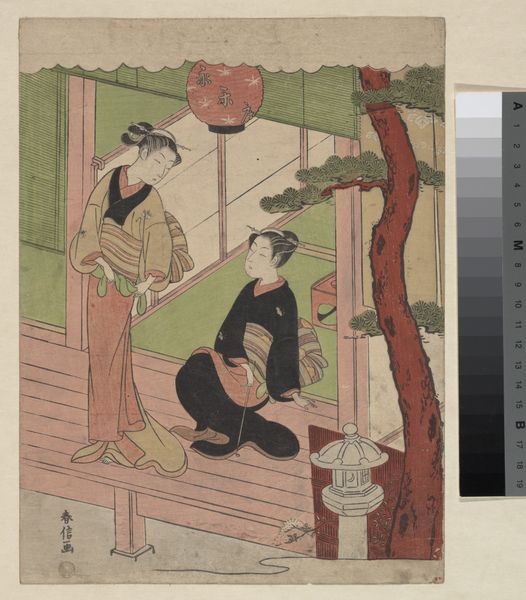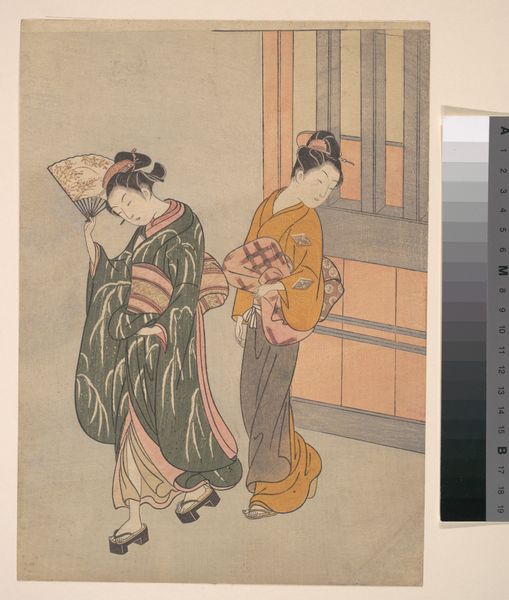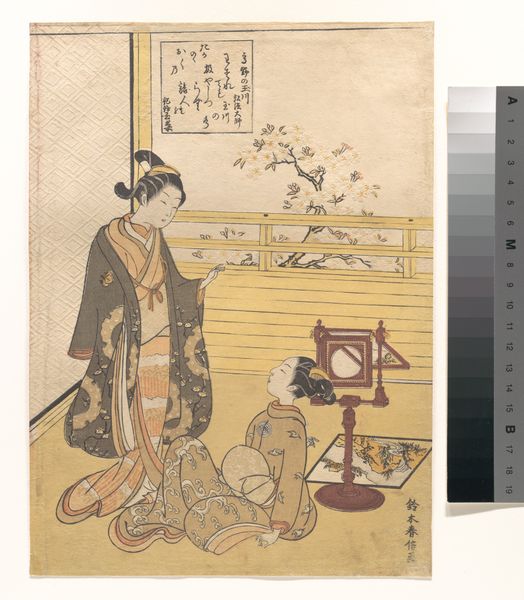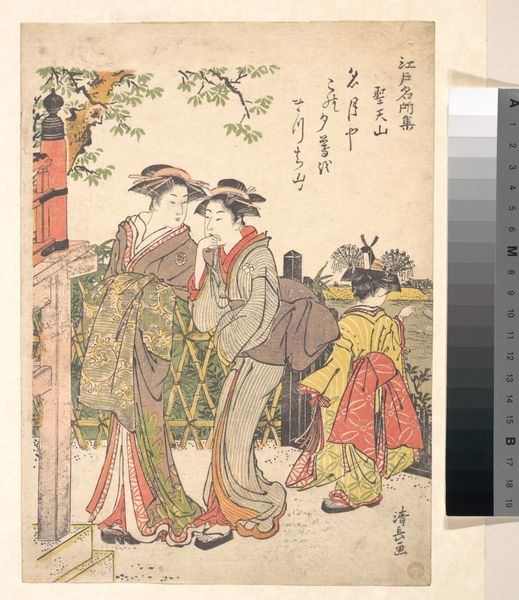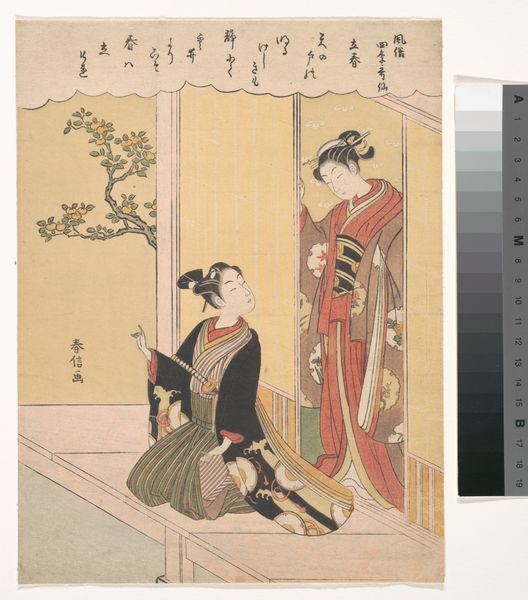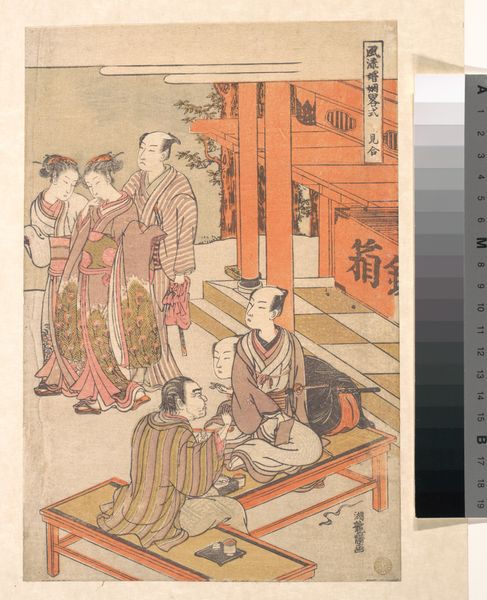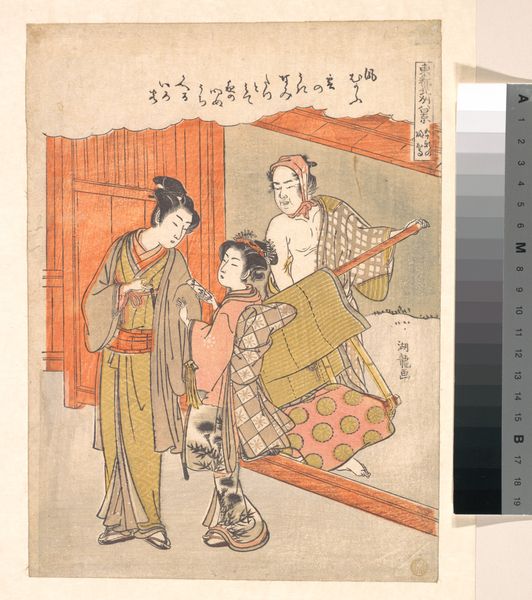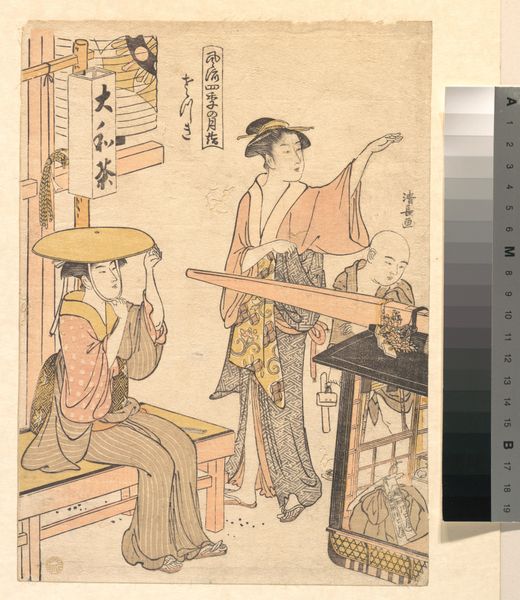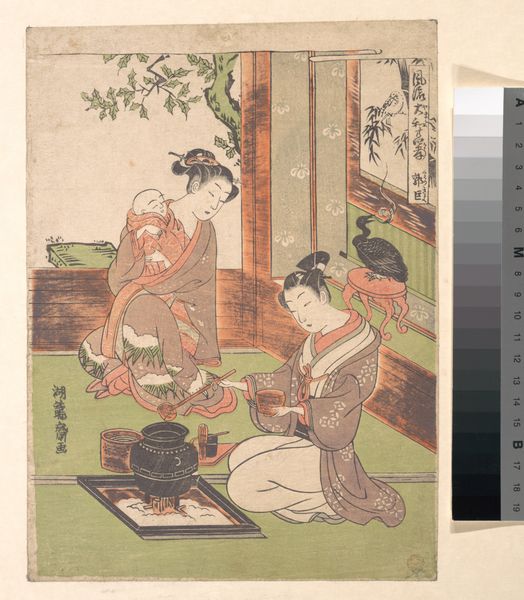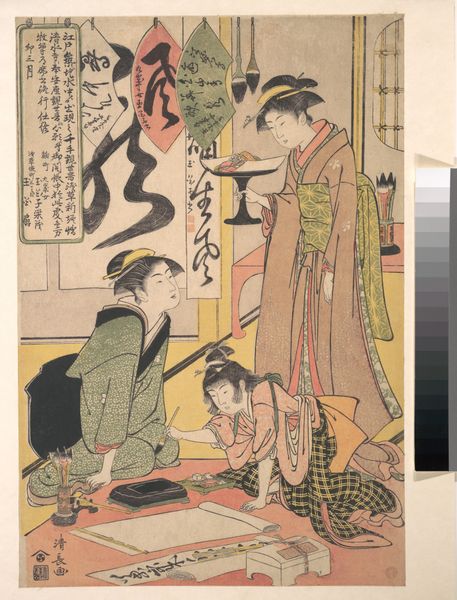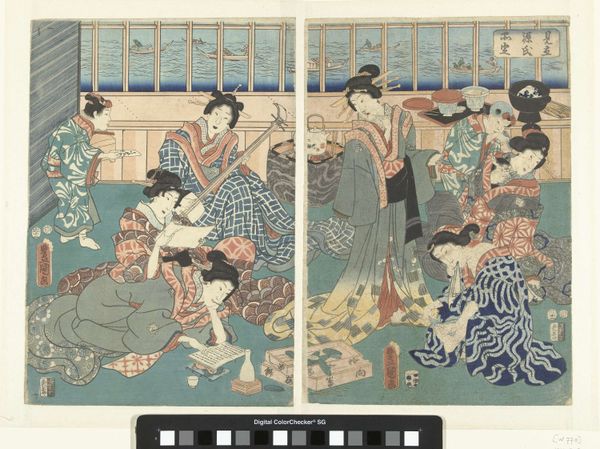
print, textile, woodblock-print
#
portrait
# print
#
asian-art
#
textile
#
ukiyo-e
#
woodblock-print
#
genre-painting
Dimensions: H. 11 3/16 in. (28.4 cm); W. 8 3/8 in. (21.3 cm)
Copyright: Public Domain
Curator: Welcome. Here we have "On the Engawa of Tsuta-ya", a woodblock print created by Suzuki Harunobu between 1755 and 1777. It's a serene glimpse into a domestic interior, currently held at the Metropolitan Museum of Art. Editor: It’s remarkably still, almost frozen in time. The subdued palette and delicate lines create a hushed, intimate atmosphere, as if we're observing a private moment. Curator: Precisely. The "engawa," the veranda space, acts as a liminal zone between interior and exterior, a stage for subtle social interactions. Note how the textile patterns--the women’s kimono and the seat cushion--function as social signifiers, hinting at status and refinement. The choice and combination of geometric patterns is superb. Editor: These patterns aren’t mere decoration. The textiles carry complex codes relating to lineage, season, even personal aspirations, don’t they? Curator: Absolutely. Kimono, in particular, functioned as a wearable canvas, imbued with personal and cultural meaning. The woman adjusting her kimono, for example--what narrative could unfold from such a simple gesture? Is it a conscious display of refinement or subconscious reflex of comfort? These prints really became a mirror of everyday Edo period life, reflecting desires and conventions. Editor: It also brings a great sense of depth using receding parallel lines of the engawa’s floorboards. It emphasizes space. Curator: Indeed. Also note the subtle color gradations, particularly in the blind or screen and textiles, this contributes to its elegant atmospheric depth. The composition feels deceptively simple but masterfully leads the eye around. Harunobu achieved this by introducing "nishiki-e" or brocade prints to ukiyo-e, layering color and detail for unparalleled visual richness. The cultural weight embedded is substantial: an encapsulation of beauty standards and ritual gesture from a vanished society. Editor: Reflecting on this work, I’m reminded how such precise, focused attention to form unlocks deeper cultural insights. Curator: For me, I appreciate the capacity of symbols, and here textile pattern especially, to encapsulate layers of social nuance, giving this intimate snapshot greater context.
Comments
No comments
Be the first to comment and join the conversation on the ultimate creative platform.
